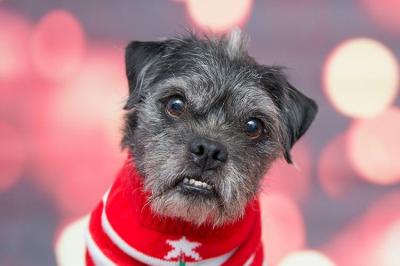
How to Keep Dogs Warm in the Winter
Just like overheating in hot weather can be dangerous for dogs, cold weather also can pose risks. This is especially true for dogs not acclimated to cold outdoor temperatures and dogs with short coats. Here are some tips for how to keep dogs warm in the winter and cold weather.
How cold is too cold for dogs?
Like humans, each dog will tolerate cold weather to a different degree. Factors that go into how well a dog tolerates the cold are breed, age, overall health, nutritional status, physical conditioning, coat density, and acclimation. For example, northern breeds, such as Siberian and Alaskan huskies, malamutes, and Bernese mountain dogs, generally tolerate cold temperatures well because of their thick undercoat.
As a general rule, it takes anywhere from one week to two months for a healthy dog to become acclimated to extremes in temperature. This wide range takes into account various individual physiological factors. Keep in mind that wind and dampness will magnify the effects of low temperatures.
How to tell whether your dog is cold
Keep an eye on your dog for signs they're not tolerating the cold: shivering, refusing to move or follow cues, refusing to come out of their kennel, or lying in a curled-up position when outside.
Home starts with you
In general, a quick trip out and about should not result in a condition as severe as frostbite. But frostbite can occur if a dog is left outside for long periods of time on a very cold day and if the dog can't move away from a cold surface and maintain adequate circulation in their extremities, from pads to tail to nose.
If you’re at all unsure about how to keep your dog safe and comfortable in the winter weather, a conversation with your veterinarian about your dog’s particular situation can help you provide the appropriate degree of protection from the cold.
Providing dogs with cold weather protection
Dog coats
If you have a short-haired dog who spends most of their time indoors and goes out mainly for walks around the neighborhood, consider having your pup wear a sweater or coat in chilly weather. On the other hand, if you have a dog with a thick coat who is acclimated to the cold and spends a considerable amount of time outdoors romping in the snow, a coat or sweater can actually cause some degree of overheating.
Boots for dogs
If you live in an area where there’s snow and ice, always wipe your dog’s feet after a walk. Your dog might have picked up ice-melting chemicals, which can irritate and burn their pads. In addition, some of these products are poisonous when ingested.
You might want to try getting your dog accustomed to wearing boots, which will protect their feet from sharp pieces of ice and balls of snow getting stuck between their pads, as well as from ice-melting products. Many dogs aren’t happy campers when someone puts something on their feet, so you'll need to introduce boots gradually and positively. First, if necessary, help your dog feel comfortable with their paws being touched by slowly increasing handling. Then, here's how to help your dog acclimate to boots:
- Try putting on one boot, feeding your dog a high-value treat and then taking off the boot. Keep doing this until your dog looks happy when you put on the boot.
- Ask your dog to move around the room wearing the one boot, using a high-value treat as a reward.
- Once your dog is happy walking around in the one boot, repeat the process and add one boot at a time until your dog is walking around the room wearing all four boots. Then you’re both ready to brave the snow and ice.
Outdoor doghouses
If your dog stays outside in cold weather for more than potty breaks and walks, they will need a warm, dry place away from the cold and wet. Provide your dog with an insulated, airtight doghouse that is raised up off the ground at least a few inches and is equipped with a door flap to keep out drafts. Also, make sure the doghouse always has dry bedding; a lot of hay or straw is a good insulator that dogs can burrow down into.
Above all, please remember that dogs are social animals and you are their family. They want to be with you, so don’t leave your dog outside in the cold all the time.
